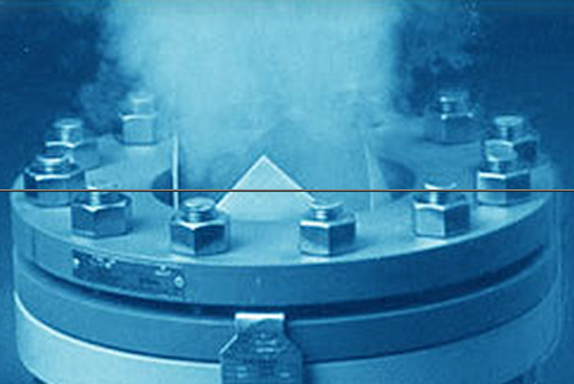RPPS Chair
-
J. Wayne Chastin, DIERS_chair@aiche.org
Featured Topics
-
Effectively Deal with Evolving Codes, Standards, and RAGAGEP for Pressure Relief Systems
-
Development of Engineering Analysis Methods and Tools for Pressure Relief Valve Stability
-
New Developments in Fire Exposure and Depressuring Systems Design and Evaluation
-
Practical Two Phase Flow Onset and Disengagement Methods for the Process Industries
-
Effective Scenario Identification for Pressure Relief and Effluent Handling Systems
-
Unique Aspects of Pressure Relief Systems Design and Evaluation for Reaction Systems
-
Get the Most Out of Your Existing Flare and Effluent Handling Systems Infrastructure
Joint Session
Effectively Deal with Evolving Codes, Standards, and RAGAGEP for Pressure Relief Systems
Recent changes in ASME code, governing API standards, and OSHA’s approach to the enforcement of Recognized and Generally Accepted Good Engineering Practice related to relief design have created a confusing landscape for the process industries. This session invites original papers that offer explanation, approaches, clarification and guidance on pressure relief codes, standards, and related RAGAGEP.
Development of Engineering Analysis Methods and Tools for Pressure Relief Valve Stability
ASME and API have established maintaining the inlet pressure drop for a relief valve below 3% of the set pressure as the criteria for ensuring stable valve function. Recent investigations have indicated that relief valve stability is a more complex phenomenon than previously thought. This session invites original papers that present the results of research and investigations of relief valve stability as well as those that offer practical approaches of evaluating this important criterion of relief system design.
New Developments in Fire Exposure and Depressuring Systems Design and Evaluation
Fire exposure has long been the governing criteria for relief design for many types of process equipment, vessels, and tanks. This session focuses on advances and novel approaches to dealing with this ubiquitous relief contingency including treatment of vessel wall heating, failure criteria, appropriate correlations for heat input, prediction of two phase flow from wall heating, the effect of impact of equipment boiling dry during a fire event, and the design of depressuring systems. This session invites original papers that present new research in this area as well as novel and practical approaches to dealing with this contingency.
Practical Two Phase Flow Onset and Disengagement Methods for the Process Industries
Disengagement and two phase flow onset investigation was a significant portion of the research originally funded by the DIERS consortium. This research led to the development of the DIERS coupling equation. Since its development new methods and approaches have been developed to predict when a relief system will experience two phase flow and the quality of the flow. This session invites original papers that offer a comprehensive review of approaches for the prediction of two phase onset and disengagement or offer advances in the field which can be applied by relief system designers.
Practical Methods for Two Phase Flow Estimates
The prediction of pressure drop and mass flux in relief systems that experience two phase flow significantly impacts the sizing of the pressure relief system as well as the effluent handling system and therefore the safety of the installation. A variety of models are available for two phase flow prediction but navigating the landscape and selecting the right one can be difficult. This session invites original papers that offer guidance on the selection of appropriate models for design as well as advances in the modeling of two phase flow technologies based on new research or reviews of the existing literature.
Effective Scenario Identification for Pressure Relief and Effluent Handling Systems
Properly designing a relief system starts with appropriate scenario selection. Missing a governing scenario can result in an undersized or inappropriately designed pressure relief or effluent handling system. Scenario identification poses particular challenges when reactive relief is a credible design case. This session invites original papers that offer guidance on methods for the appropriate selection of relief contingencies to ensure the design of relief systems and effluent handling is adequate.
How to Measure the Right Data for Reaction Systems
Relief design for runaway reactions requires the development of a model of the reactive system which includes the heat released, the generation of non-condensables, and the physical properties of the reactive system. Design of these systems can be accomplished either through the application of scaling methodologies or the development and application of a kinetic model. Either approach will require calorimetry to characterize the behavior of systems which are not already established. This session invites original papers that focus on the testing required to characterize reactive systems and obtain the required data for the development of kinetic model for the system or use a direct scaling approach to size relief systems from the collected data.
Unique Aspects of Pressure Relief Systems Design and Evaluation for Reaction Systems
The design of pressure relief system for a runaway reaction is a challenging endeavor. Even when appropriate testing has led to the development of a kinetic model, many other factors must be accounted for in order to properly size a relief and effluent handling system for a runaway reaction. This session invites original papers on the pressure relief design for reactive systems including application of kinetic models in dynamic simulations.
Get the Most Out of Your Existing Flare and Effluent Handling Systems Infrastructure
Case Histories and Lessons Learned
This is always an important session that reviews significant incidents. This session invites papers to help understand the causes and lessons learned from significant incidents.

